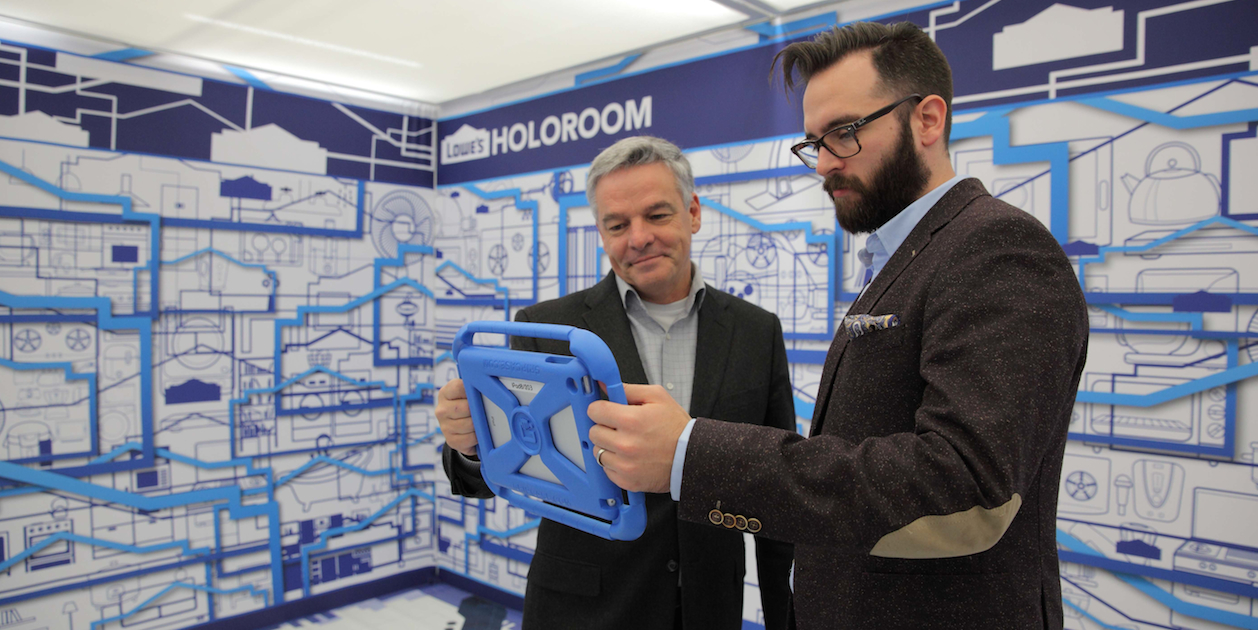One of the gifts of a science fiction writer is the ability to imagine what might be possible before it is.
That’s why Lowe’s hands over its consumer research to a team of science fiction writers. Since late 2013, the hardware retailer has been working with a handful of freelance writers who filter what’s happening in technology and society through the lens of Lowe’s business challenges, then return with comic books that showcase new technologies and how they could be used by the retailer.
So far, the company’s had two big hits: its ‘Holoroom’ augmented reality experience and OSHbot customer service robots. On Friday, Kyle Nel, executive director of Lowe’s Innovation Labs, will speak about both at South by Southwest in Austin, Texas. Ahead of the talk, Marketing chatted with him about comic books, big ideas and how projects from its Innovation Lab have become Lowe’s Bat Signal to the startup world.
Here’s five things he’s learned about innovation from science fiction.
CRAZY IDEAS GET ATTENTION
Big ideas often sound audacious, but that’s not necessarily a bad thing. Bold, new ideas make people listen. They attract attention and pique enough curiosity for people to give them more consideration – both inside companies and at the consumer level.
When Nel first pitched Lowe’s on using science fiction writers for research and development, plenty thought the idea was crazy, but they sat up and listened. “People still think it’s crazy. That’s half the fun,” Nel said. “If something is perceived as crazy and out there, then people look at it more closely and give it a little more latitude. They look at it with a different frame.”
COMICS MAKE NEW IDEAS EASIER TO DIGEST
Technology can be difficult to explain. Visuals and stories make new, unprecedented tech easier to understand. In the case of Lowe’s, Nel said presenting proposed projects in comic book form helped the rest of the company understand how the things his team was working on, like the Holoroom, could benefit the Lowe’s retail experience.
“It’s less confrontational presenting new and complex information in comic book form,” Nel said. “It’s kind of like if you send someone a really mean email in a funny font. They say, ‘Oh, it’s not that bad, I guess.’”
SCIENCE FICTION IS AHEAD OF THE ADOPTION CURVE
Lowe’s writers crafted the stories that inspired the Holoroom two weeks before Oculus Rift, a virtual reality head-mounted display, launched as a Kickstarter project. At the time, no one was talking about virtual reality in the retail world, Nel said.
By tapping science fiction writers, the company was able to imagine what could happen with virtual reality, before even startups were bringing projects similar to the Holoroom to market. A year and a half later (the Holoroom was the Innovation Labs’ first project), virtual reality is a hot topic in marketing and retail and Lowe’s is one of the first to deliver a fully realized experience.
BEING FORWARD-LOOKING HELPS BRAND PERCEPTION
Lowe’s now sees technology as a differentiator that sets it apart from its competitors in the hardware retail space. When the Innovation Lab makes an announcement about a new store experience, it’s a big PR hit for the brand. As the company talks more about the Lab, Nel said he thinks consumers are starting to view Lowe’s as a more innovative brand.
While Nel wouldn’t say if the retailer’s found a direct link between Innovation Labs projects and store sales, he said they’ve attracted attention on social and in the press, and brought customers into the store that otherwise might not have visited.
INNOVATION ATTRACTS PARTNERS
Projects from the Innovation Lab have also attracted attention in the startup world. While startups may not initially think of a brick-and-mortar retail store as a partner, Nel said young companies are now bringing prototypes to Lowe’s to talk about partnerships before they’ve gone to market, which has been a boon for the brand.
“It’s what we call the Bat Signal to the rest of the world: you should come and talk to us if you have something interesting,” he said.











